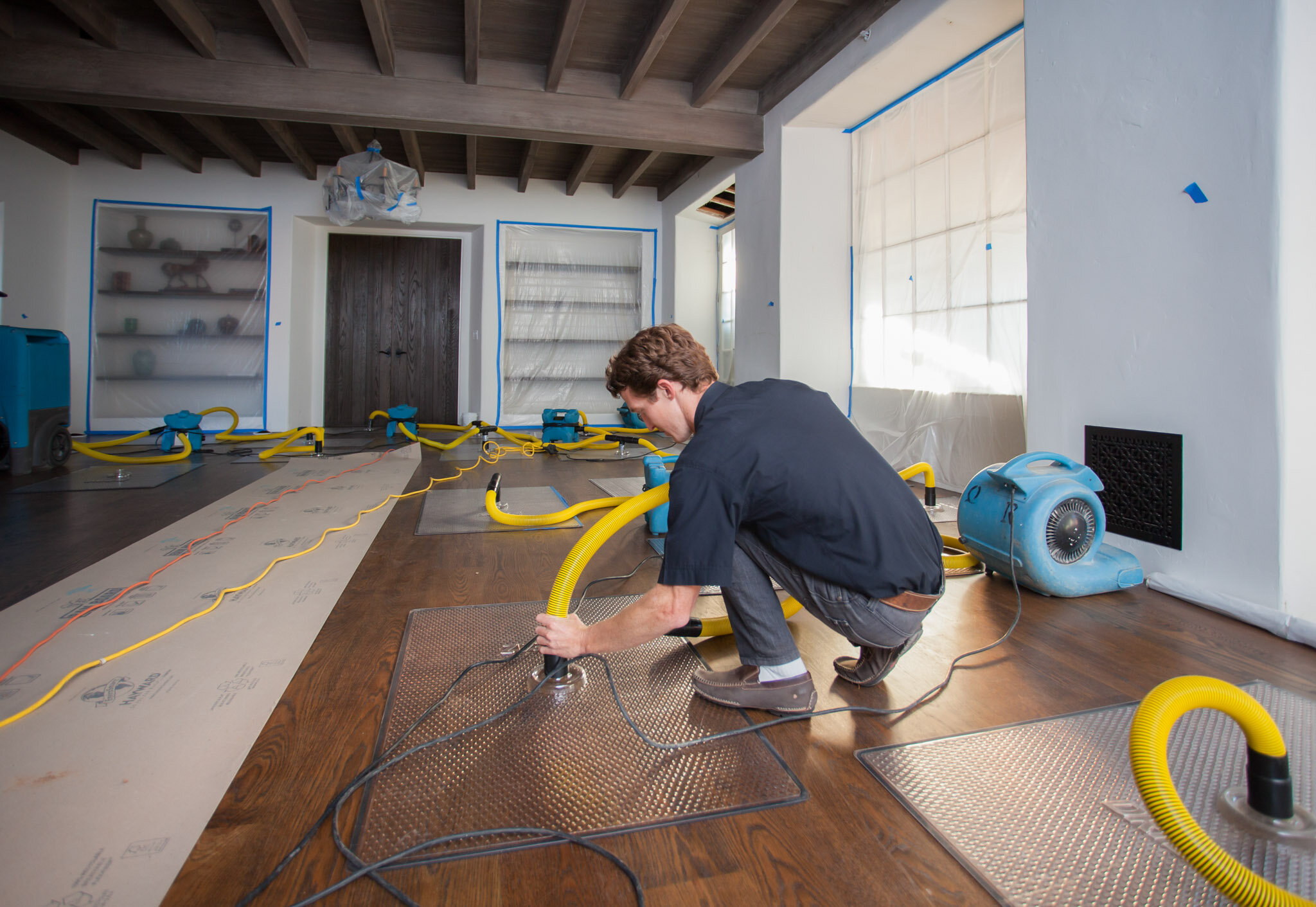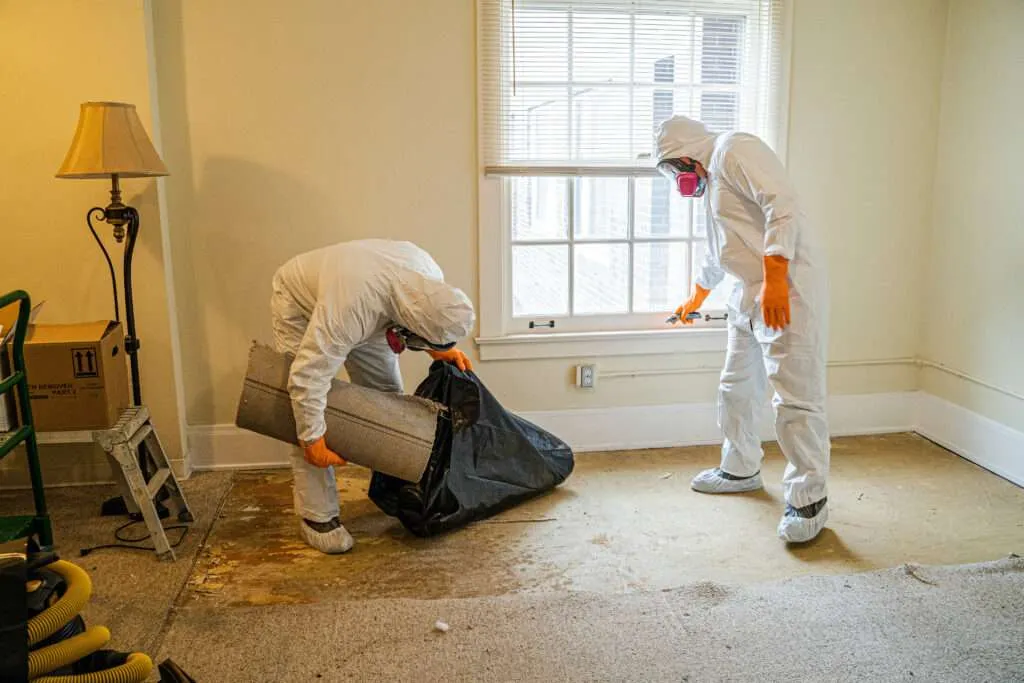How Flood Cleanup Services minimize long-term damage to property
Water Damage Restoration 101: Understanding the Process and Cost
Water damage can strike suddenly, leaving property owners in a state of complication. Recognizing the restoration process is necessary for reliable recuperation. From evaluating the damage to choosing the appropriate company, each action influences the overall outcome and expense. Variables such as the kind of water damage and seriousness additionally play a significant duty. What are the specific methods used in restoration, and how can one plan for possible expenses?
Types of Water Damage

Preliminary Analysis and Inspection

Water Removal Techniques
Adhering to the first analysis, reliable water extraction methods are employed to mitigate damage and protect against more issues. These strategies entail making use of specific tools such as industrial-grade vacuum cleaners and submersible pumps - Water Damage Restoration. The choice of method relies on the quantity of water existing and the sort of products influenced. For standing water, completely submersible pumps are typically utilized for quick elimination, while vacuums are perfect for drawing out water from carpetings and furniture. Furthermore, progressed methods like water removal mats might be employed for hard-to-reach areas - Water Damage Restoration. The objective is to get rid of as much water as feasible, lessening the potential for mold and mildew development and structural damage. Prompt and effective water extraction is necessary in the total water damage remediation process
Drying and Dehumidification Process
As soon as the water extraction is complete, the drying and dehumidification process becomes crucial to bring back the damaged area. This phase generally employs industrial-grade dehumidifiers and air movers to properly minimize dampness degrees. The dehumidifiers reel in damp air, getting rid of excess humidity, while air movers circulate air to speed up evaporation. Monitoring devices is commonly utilized to track humidity and temperature degrees, making sure perfect drying out conditions. The period of this procedure can vary relying on the degree of the water damage and ecological aspects. It is vital to thoroughly dry all affected materials, including walls, floor covering, and furnishings, to avoid mold growth and architectural damage. Proper execution of this step is essential for a successful reconstruction outcome.
Cleaning Up and Disinfecting Damaged Locations
A thorough first analysis and evaluation of affected locations is important to determine contamination levels once the drying procedure is full. Flood Cleanup Services. Efficient cleansing methods and suitable products have to after that be utilized to remove debris and stains. Finally, sanitization and sanitation methods are necessary to guarantee that dangerous pathogens are gotten rid of, bring back the room to a safe problem
Initial Assessment and Examination
Before starting any type of restoration efforts, an extensive first assessment and examination of the impacted areas are crucial for efficient cleansing and sterilizing. This process entails identifying the level of water damage, identifying the resource of the water invasion, and evaluating the products affected. Assessors usually search for signs of mold and mildew development, structural honesty problems, and harmed personal belongings. The evaluation likewise includes checking moisture levels using specialized equipment to guarantee no surprise water pockets stay, as these can bring about additional problems. Documenting the findings is necessary for planning the next action in the repair process. A detailed initial analysis allows restoration experts to create a targeted approach for effective cleansing and disinfecting, inevitably decreasing damage and health dangers.
Cleaning Methods and Products
Effective cleaning and sanitizing of water-damaged locations call for a selection of strategies and items customized to the certain materials impacted. For porous surface areas like drywall and carpeting, removal methods are vital to get rid of excess moisture, followed by deep cleansing with specialized detergents. Non-porous products such as ceramic tile or metal can be cleaned up making use of commercial-grade cleansers that successfully remove contaminants. Steam cleaning is one more effective method, specifically for carpets and furniture, as it makes use of high temperature levels to eliminate bacteria and mold and mildew (Flood Cleanup Services). Additionally, eco-friendly items are increasingly prominent for their safety and security and effectiveness - Water Damage Restoration. Eventually, choosing the appropriate cleaning methods and products not only guarantees prompt tidiness yet likewise aids in protecting against additional damage and health hazards connected with water breach
Sanitization and Disinfection Techniques
When attending to water damage, proper sanitization and disinfection techniques are important to assure the security and health and wellness of the afflicted setting. After preliminary cleansing, surface areas have to be treated with proper anti-bacterials to get rid of microorganisms, mold, and bacteria that thrive in damp conditions. Usual techniques include the usage of EPA-approved chemical anti-bacterials, which can be applied via spraying or cleaning techniques. In addition, ultraviolet (UV) light systems can efficiently sanitize locations by counteracting microbes without harsh chemicals. The option of approach usually relies on the kind of products affected and the degree of contamination. Ultimately, detailed sanitization not just restores a safe living space but also helps avoid future health and wellness risks related to remaining wetness and mold growth.

Repairs and Restoration Options
Evaluating the damage triggered by water exposure is important for identifying the proper repairs and restoration options. Property owners might encounter different issues, including harmed drywall, distorted flooring, and compromised structural components. Depending upon the degree of the damage, repair services might involve changing areas of drywall, setting up new floor covering, or strengthening architectural beam of lights. In situations of severe damage, full substitute of afflicted products could be necessary. Furthermore, expert restorers commonly advise making use of moisture meters to evaluate concealed moisture degrees before selecting the most effective strategy. It is necessary to act without delay to protect against mold and mildew development and additional wear and tear. Choosing the right options not just brings back the residential or commercial property however additionally ensures lasting security and performance.
Aspects Influencing Restoration Costs

The level of water damage straight impacts the repair sets you back house owners can expect to sustain. Aspects such as the resource of the water, the duration of direct exposure, and the damaged products significantly affect pricing. Clean water damage from a damaged pipe is normally much less pricey to bring back contrasted to damage caused by sewer. In addition, the level of contamination determines the demand for specialized cleansing and disposal services, even more enhancing costs. Geographic area also plays a role, as regional labor prices and accessibility of reconstruction solutions can differ. Finally, the seriousness of the reaction impacts expenses; quicker interventions generally cause decrease overall expenses by stopping additional damage. Comprehending these elements is important for house owners when approximating remediation prices.
The three primary kinds of water damage are categorized based on contamination levels: clean water, grey water, and black water. A detailed preliminary evaluation and inspection are crucial actions in the water damage repair process. For standing water, completely submersible pumps are commonly useful reference made use of for fast elimination, while vacuums are ideal for extracting water from carpetings and upholstery. The level of water damage directly impacts the restoration sets you back homeowners can anticipate to sustain. Tidy water damage from a broken pipe is usually much less costly to recover compared to damage triggered by sewer.